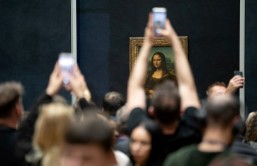Google has captured the spectacular views from the top of the Eiffel Tower in its Street View camera and has mounted an exhibition of the mesmerizing history and the technology behind the gigantic monument.
The Street View team captured breathtaking 360-degree images of the City of Light from the top two floors of the French monument. The varied architectural styles of the city can be observed clearly in these images.
Google Cultural Institute teamed up with the Eiffel Tower Operating Company to create three new exhibitions that feature "50 archival images, plans, engravings and photos telling the story of the Eiffel Tower's development and social impact in the 19th century."
The online exhibition compiled by the team gives details and photos of the birth of the Eiffel Tower, its inauguration and first visitors and how the sky-scraping tower was built.
Eiffel Tower, which was designed by Gustave Eiffel, was contructed in 1889 and it took two years to finish. The tower, which stands 1,063 feet high, was the tallest monument in the world for over 40 years. It is one of the world's most visited monuments welcoming nearly 7 million guests each year.
"As a product manager and designer, it's been awe-inspiring to get to see the spectacular vision and the detailed architectural capabilities exemplified by the plans more than 100 years ago," Mark Yoshitake, head of product and user experience at the Google Cultural Institute, wrote in a blog post Tuesday. "It required tremendous knowledge of special planning and physics to ensure that 18,000 separately made pieces would come together as one."
Google unveiled new images from the tallest building in the world, the Burj-Khalifa Dubai, last month, which was the first skyscraper captured by Street View.
Google's early blunder with its Street View that captured data including e-mails, passwords, photos and chat logs from open Wi-Fi networks within the range caused great trouble for h company. But the the web giant seems to be turning a corner by focusing on expanding its service by integrating the greatest monuments in its imagery.








